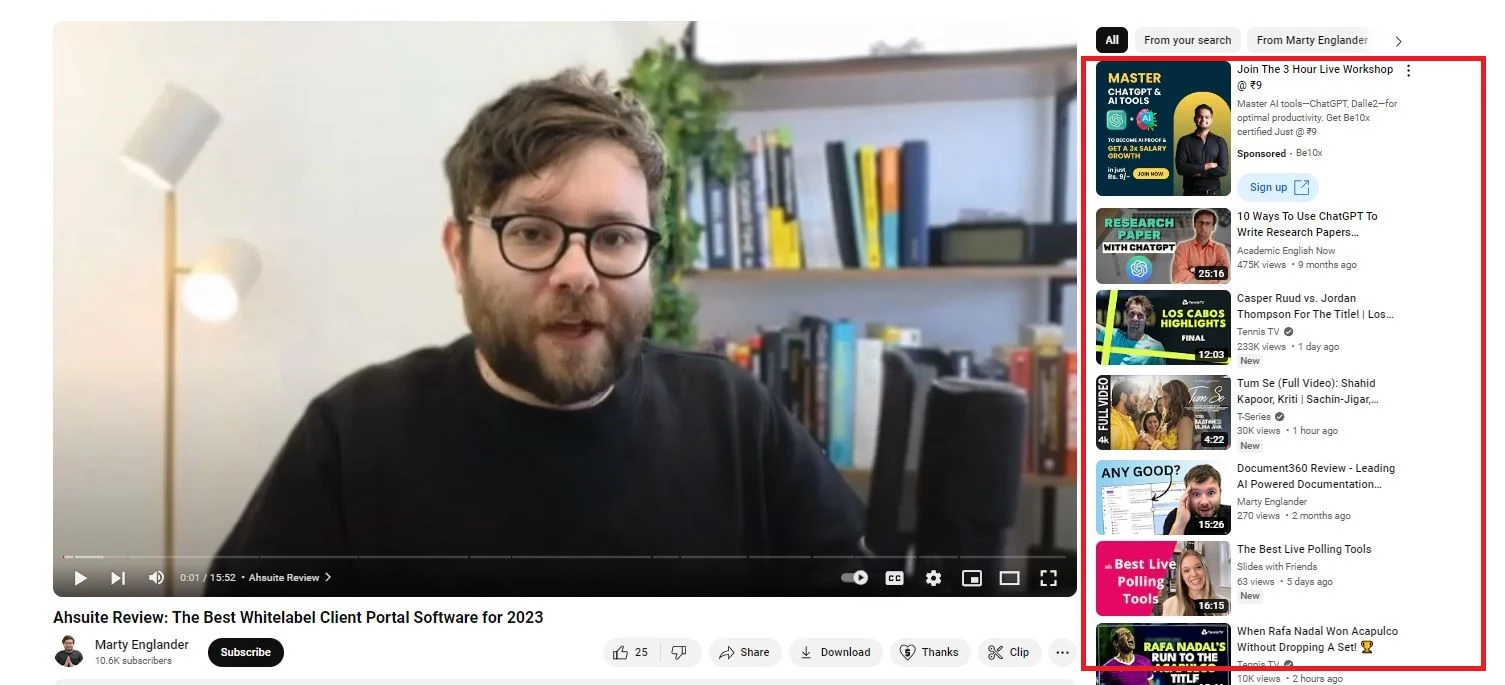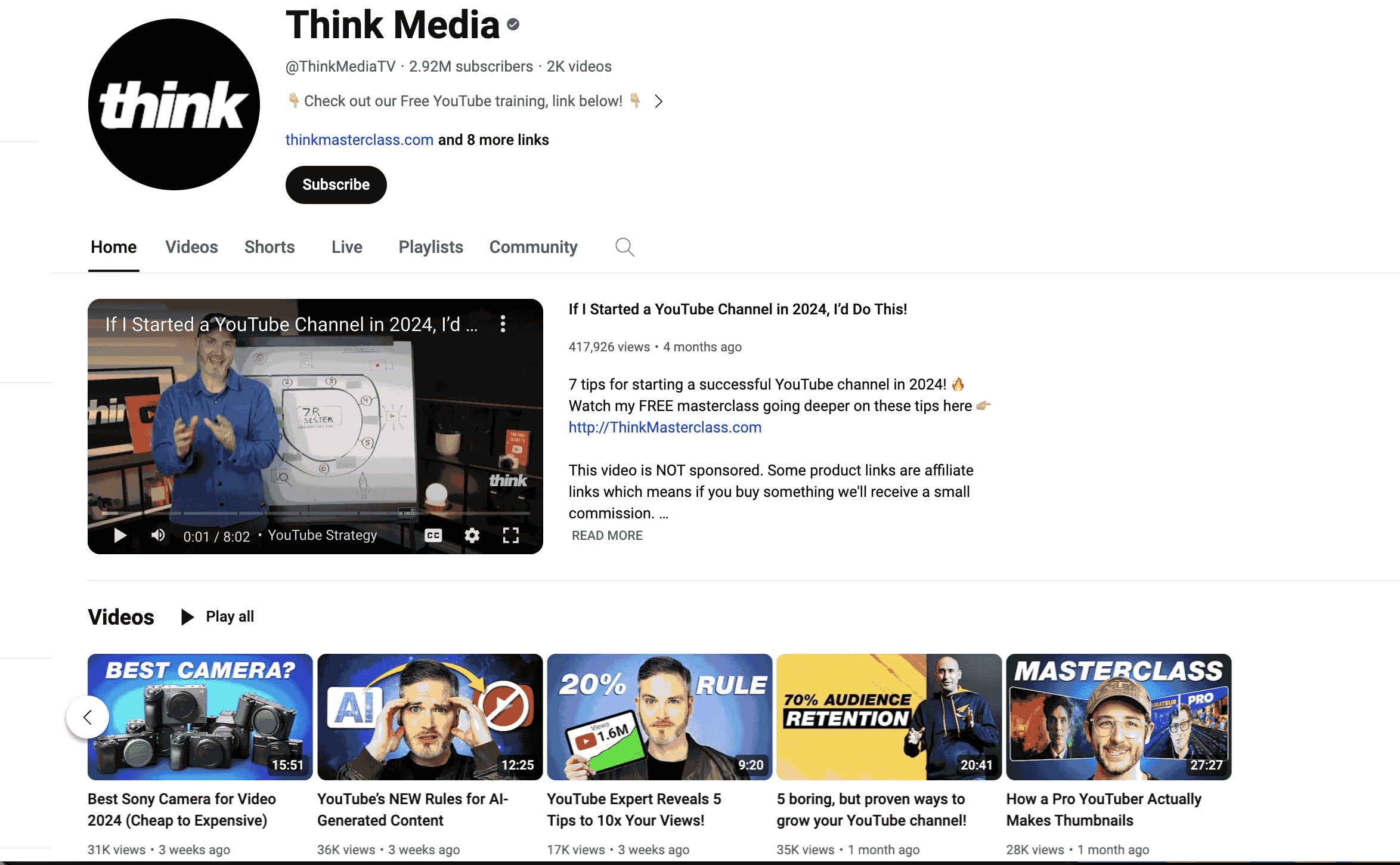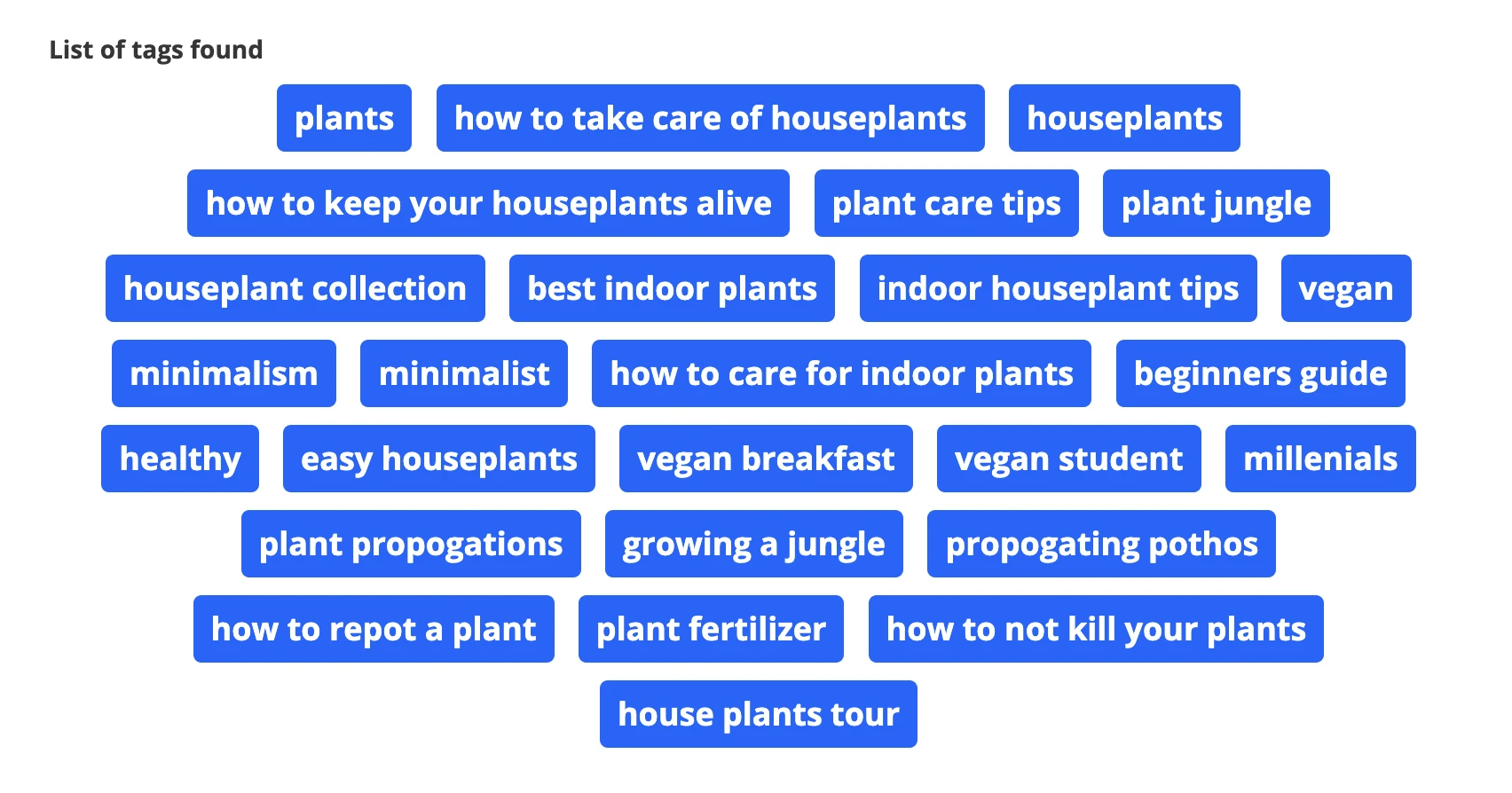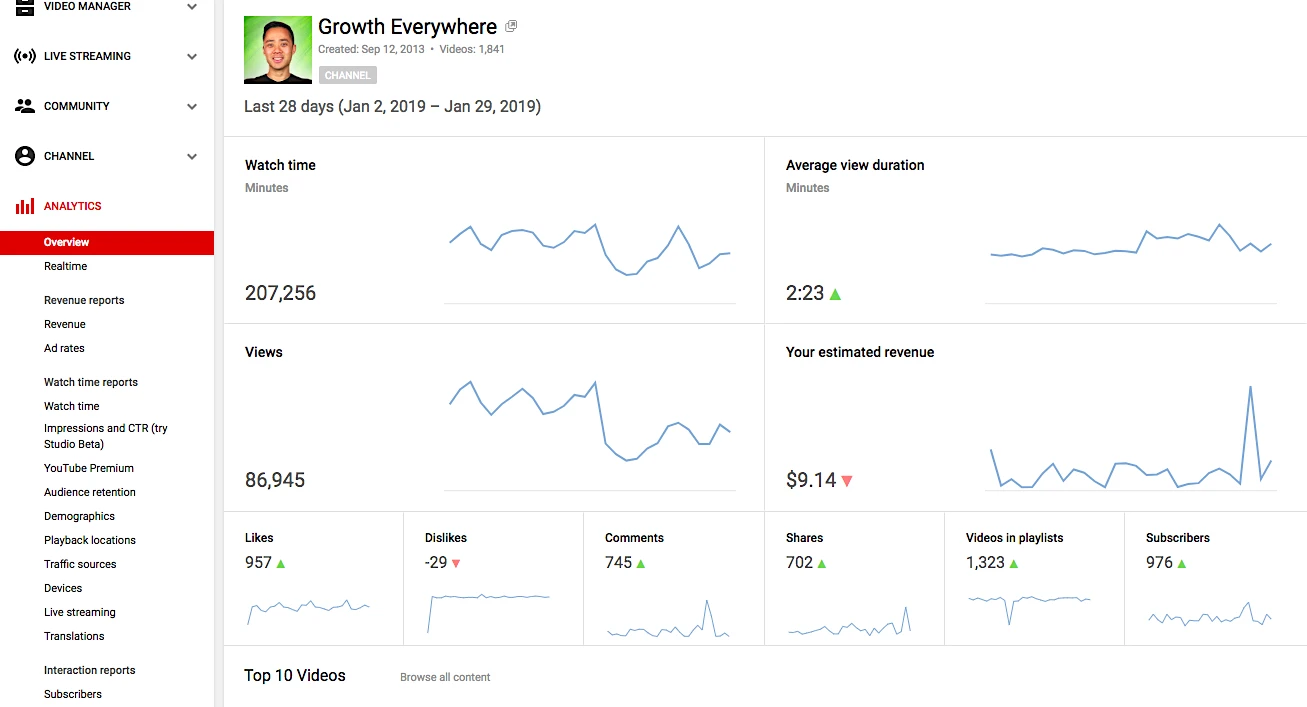Mastering YouTube SEO for Enhanced Visibility and Conversions
YouTube is one of the longest-standing video social media platforms and the second most-visited website in the world.
Over the years, YouTube has become more than just a video-hosting platform. It’s a powerful search engine that every savvy business can use to expand its audience and boost conversions.
However, with millions of other businesses uploading videos and vying for attention, YouTube is a highly competitive battleground.
The key to succeeding on this platform is to optimize your videos appropriately, so they drive traffic to your website.
In today’s article, we will explore YouTube SEO and how it works. We will also discuss some actionable content optimization strategies to help your channel get more conversions.
So, let’s get started!
What is YouTube SEO?
YouTube SEO refers to optimizing your channel page, video descriptions, and metadata to get a better ranking in YouTube search results.
The process involves strategies that boost organic traffic, so that your target audience can easily discover your content.
From incorporating keywords to optimizing video descriptions and crafting catchy titles, there is a plethora of factors that influence YouTube rankings. Understanding the importance of goal setting in this context can significantly enhance your strategy, guiding you to focus on the most impactful aspects for growth. All these factors combined make your videos more appealing to the viewers and YouTube’s search algorithm.
What Is the Mechanism behind YouTube SEO?
YouTube is a part of Google. As a result, the video-hosting platform employs a similar search algorithm to effectively rank videos based on various search queries.
Here are the various elements that contribute to YouTube’s algorithm. This will help you craft a comprehensive YouTube SEO optimization strategy.
Keywords:
Just like traditional SEO, keywords play a vital role in boosting video SEO. Keywords are the search terms that your target readers enter into the search engine box to find answers to their queries. Once you have a potential list of keywords ready, make sure to incorporate them into your video titles, tags, and descriptions to provide adequate context to YouTube’s algorithm.
Titles and Thumbnails:
An eye-catching thumbnail design and intriguing titles that contain target keywords are more likely to boost your overall visibility on YouTube. Engaging titles grab the viewer’s attention and hint at the content’s value, compelling them to click. Similarly, a visually appealing thumbnail acts as a snapshot of the video’s content, making it stand out in a crowded feed.
Together, these elements are vital because they form the first impression of your video, directly influencing click-through rates and viewer engagement.
Video Descriptions:
The YouTube algorithm rewards well-curated video descriptions that offer a precise overview of the video. For example, if your video is about ‘Healthy Breakfast Recipes,’ your description could start with ‘Discover quick and nutritious breakfast recipes that will keep you energized throughout the day.’ Make sure to pack the description with target keywords and relevant links.
Video and Channel Metadata:
Metadata plays an important role in how YouTube’s algorithm interprets and ranks your content. When your metadata, including your channel name, tags, and descriptions, is well-optimized with relevant keywords, it significantly enhances your channel’s discoverability.
Well-optimized metadata ensures that your videos are more likely to appear in search results and recommended video feeds, thus increasing your views, subscriber growth, and overall channel success.
High-Quality Content and Engagement Metrics:
Engagement metrics such as likes, shares, comments, and watch time indicate the effectiveness of your content. YouTube’s algorithm uses all these factors to rank videos. Therefore, it is important to create high-quality, compelling videos that spark viewers’ engagement.
Best Practices for Creating Quality Content and a Positive User Experience
As discussed above, your content quality plays a pivotal role in boosting Youtube search rankings.
Adhere to YouTube’s Community Guidelines and ensure your videos do not contain any hateful, malicious, violent, or graphic content that violates any copyrights. Additionally, here are some best practices that every marketer must keep in mind to create compelling content for an overall positive user experience.
Understand your target audience
The first step to creating good content is understanding who you are creating content for.
Here are the four crucial factors to consider when defining your target audience:
- Demographics
- Interests and hobbies
- Psychographics, i.e. needs, motivations, and lifestyle
- Online behavior
For instance, if your YouTube channel is about automobiles, your target audience can comprise car enthusiasts, SUV and truck owners, DIY mechanics, automobile history buffs, EV enthusiasts, etc.
In the beginning, your idea of your target audience can be based on assumptions. Gradually, as you get to know them, you can refine your overview based on your learnings.
You can also research your competitors to analyze the type of content your audience is interested in.
Connect through emotions and storytelling
Viewers will most likely resonate with your video if it elicits a strong emotional response. Create videos that induce feelings of happiness, excitement, laughter, or nostalgia.
Also, you can use the concept of storytelling to convey difficult concepts in an easy and interesting way to your audience. Make sure that your stories reflect your brand values and enhance your brand image.
McDonald’s excels at video storytelling, provoking a great response from the viewers. Their video ad, promoting their Saver Menu, depicts a heartwarming story about a mother and son that makes the viewers feel entirely invested in it.
For inspiration, consider studying talking head video examples—this popular style is often used in educational and business content. Tools like Synthesia can help you generate such videos quickly and professionally, especially when scaling video production
Collaborate with other creators
Collaborations and sponsorships are among the most sought-after business models for YouTubers. An authentic collaboration with a reputed social media influencer can help to massively grow your audience base and expose your channel to a whole new group of potential subscribers.
Moreover, such partnerships foster creativity, enabling the creation of fresh and engaging content. This not only enriches the viewing experience for existing subscribers but also attracts new ones.
For instance, renowned YouTube coaches Trena Little and Morgan Stradling collaborated on videos for each other’s channel, sharing insights on how to grow a YouTube channel.
You can use forums or even join the Mysocial App Community to find the best YouTubers to collaborate with.
Include three types of videos in your content mix
Renowned media strategist Justin Kirby, together with Lazar Dzamic, Ex-Googler, developed a proven video content strategy for YouTube: Hero, Hub, and Help.
The 3H approach sorts video content into three distinct categories. Brands that deliver the optimal balance of these three video types are massively successful in attracting their target audiences and leading them to conversion.
Hub videos are community-focused videos aimed at building a strong bond between you and your viewers. (E.g.- personal stories) Hero videos are more specific videos that delve into a particular subject matter. (E.g.- news events) Help videos include highly searchable content and offer actionable value. (E.g.- how-to guides)
Red Bull utilizes the 3H approach beautifully to vow its audiences. Here is a Hub video that gives the viewers a chance to learn about the man behind the parachute.
How to Optimize your YouTube Channel for more conversions.
Now that you know how to create stellar content, it’s time to ensure that your target group sees it.
Let’s look at some actionable tips to optimize your YouTube channel and its content for more conversions.
Structure your YouTube channel
To begin with, make sure your YouTube channel is well-optimized. Here’s your checklist to get started.
- Add a customized, branded profile photo and banner image
- Add a nice description on the About tab
- Add all the relevant links, including your website URL and other social media channel links.
- Neatly organize your videos into applicable playlists
- Subscribe to other related YouTube channels
Use relevant keywords in video titles and descriptions
YouTube is just like Google; a search engine except the results are shown in a video format.
Keywords help YouTube’s algorithm decipher what your video is about, making it show up in the search results or the ‘suggested’ column, as shown in the image below.

Use keyword research tools to find a list of relevant, low-competition keywords. Keep your keywords as simple as possible.
Phrases of two or more words (‘client portal software’ in the example above) give YouTube and viewers a better idea of your topic.
But remember not to overstuff your title with keywords. Also, keep it short and compelling for the best results.
Similarly, use keywords related to client portal software in your video description. Dedicate the first few lines of your description to describing your video with using1-2 chosen keywords to boost its rankings.
Create custom thumbnails
What many marketers don’t realize is that thumbnails can either make or break your success on YouTube. Wondering how? Suggested videos.
Suggested videos are among the top sources of organic traffic on the platform. When your video thumbnail appears in this section, it needs to stand out and encourage the viewer to click on it.
It is a good idea to compose dynamic images with overlaying branding and descriptive text. If you want to use text for your thumbnail, make sure the font choice and size are easy to read onscreen. Also, ensure that the thumbnail is relevant to the video’s content and title.

Think Media, a popular YouTube channel that delivers content based on technology, does a brilliant job with its thumbnails. The text, titles, and graphics used in the thumbnails spark curiosity among the viewers to watch the entire video.
Add tags to your video
On YouTube, tags are crucial for ranking a video. They are among the leading factors that YouTube considers to comprehend the subject of a video and index it appropriately.
YouTube allows you to add relevant tags up to 500 characters in total.
To make sure you choose the right tags, spend some time researching popular tags on the platform. Alternatively, you can use online tools like YouTube tag extractors. Simply enter the URL of a YouTube video into the extractor tool and it will give you a list of tags added for that video.
For instance, a video on ‘how to take care of houseplants’ generated the following list of tags.


Add subtitles and closed captions
Adding captions and subtitles is indispensable from an SEO point of view. The two make your videos more accessible to viewers across the globe.
Also, YouTube indexes the text in your subtitles. This helps the algorithm match the video with relevant searches.
You can either supply your own transcripts or use YouTube’s automatic captioning functionality. Once your channel takes off, consider captioning your videos in multiple languages to build a global audience.
Review your analytics
Last but not least, review your YouTube analytics at least once every month. This will help you identify areas that may need improvement.
You can find your analytics in the left-hand side menu in YouTube Studio.


Some key metrics to analyze your channel’s performance include:
- Subscribers: Note the number of people who unsubscribed.
- Top videos: Create more of what your audience likes.
- Channel watch time: This must show an upward trend each month.
- Traffic sources: Check how viewers find you, including search keywords.
Wrapping up
Mastering YouTube SEO is an ongoing process. Constantly working on it helps you reach your target audience and resonate with them in this crowded digital landscape.
The mentioned strategies can help you understand the workings of YouTube’s algorithm and implement effective ways to create videos that your audience discovers and engages with.
Nightwatch is an efficient SEO platform that can help you boost your organic traffic with unmatched accuracy. From tracking your most important keywords to comprehensive site audits, the platform can reinforce your SEO efforts and drive more business sales covering more than 190.000 locations globally.
Author’s bio:
Shikha Gupta is a content marketing specialist with experience in creating compelling and effective content for SaaS businesses. With 5 years of experience, she has a proven track record of developing content strategies that resonate with target audiences, drive website traffic, and generate leads.
